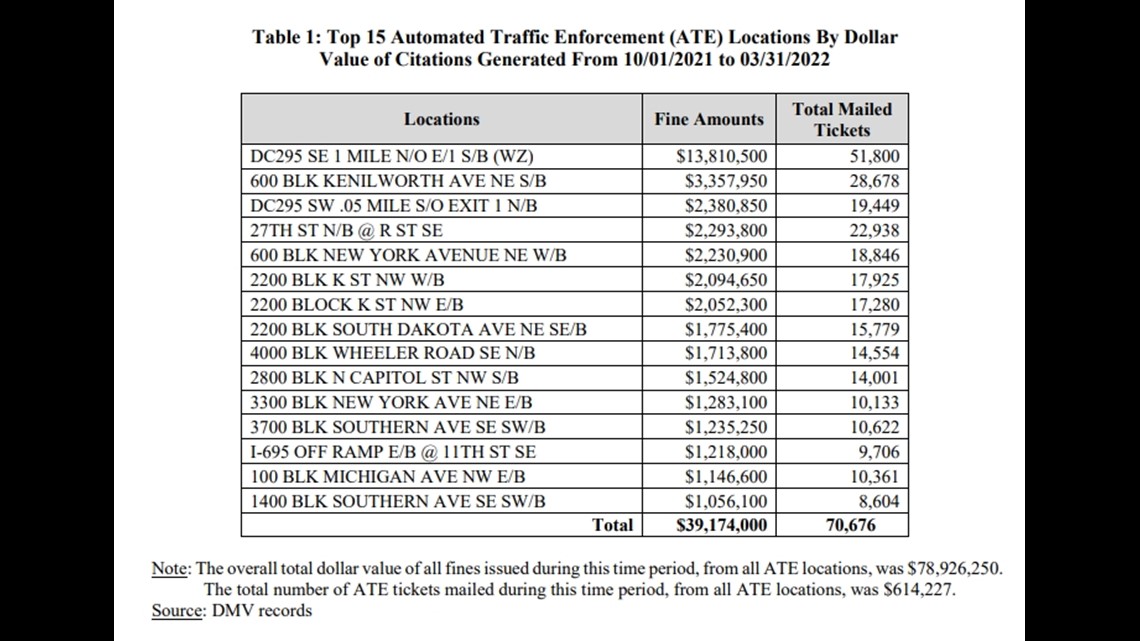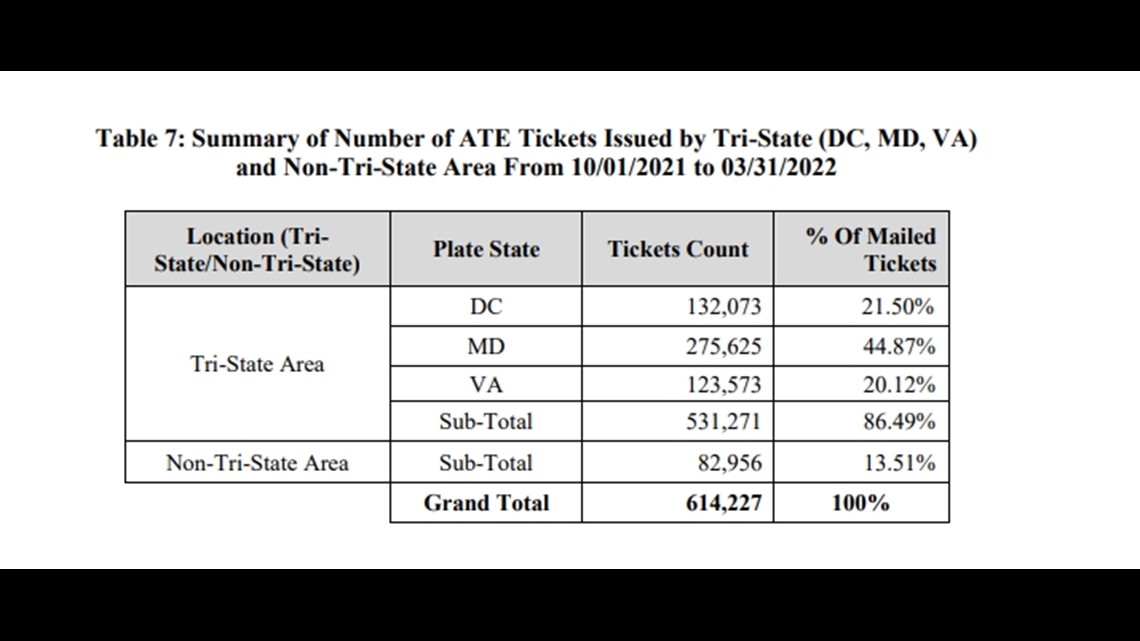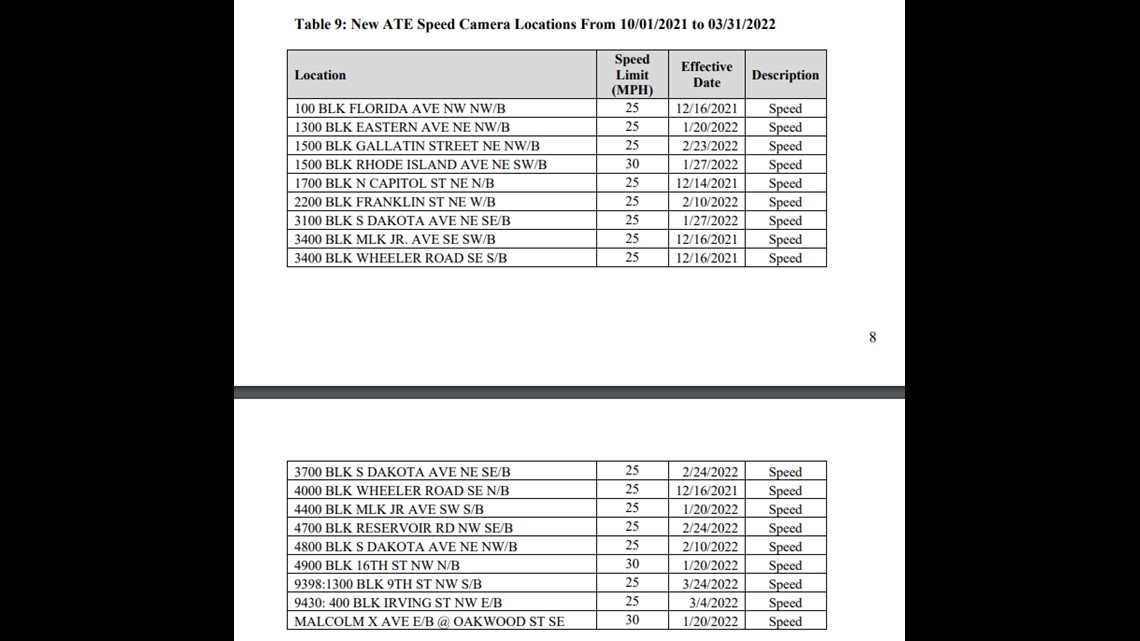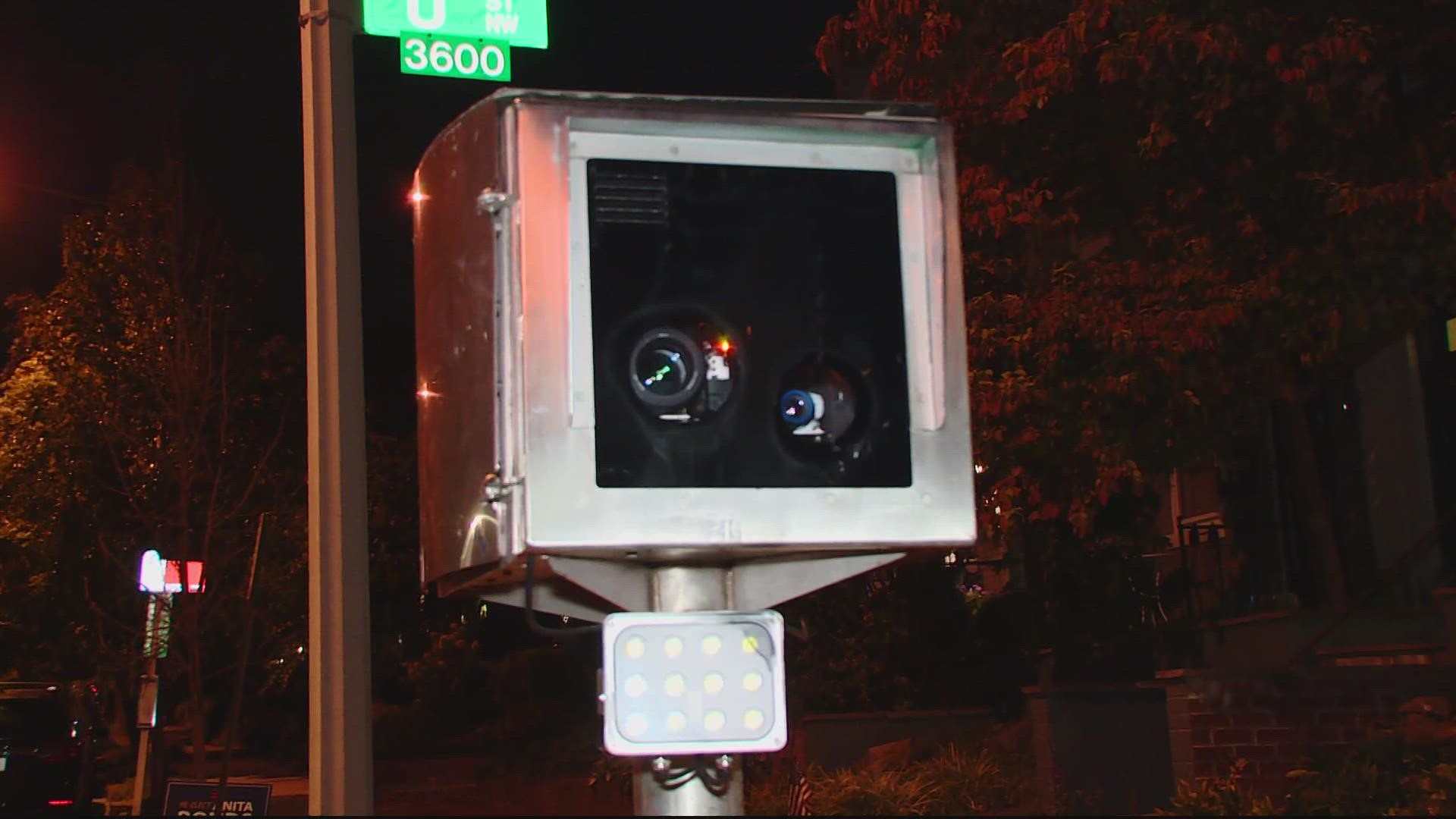WASHINGTON — DC Councilmembers continue to roll out legislation aimed at making local streets safer as the District attempts to achieve its “Vision Zero” objective.
The goal of Vision Zero is to have no fatalities or serious injuries on D.C. transportation systems by 2024.
Unfortunately, however, D.C. has fallen short of reaching that goal, so far.
D.C. has observed 25 traffic fatalities in 2022. At this same time, in 2021 and 2020, the District experienced 30 traffic fatalities.
Multiple D.C. councilmembers have taken notice.
Just a few weeks into legislative session, members have released some big proposals regarding road safety.
At-Large DC Councilmember Elissa Silverman introduced two road safety bills Wednesday to curb dangerous driving on local roads.
One bill would require speed limiters on District government non-emergency vehicles. The other proposal, named the Reckless Driver Accountability Act of 2022, would allow D.C. to boot or impound any car that has five moving violation tickets, or three tickets for speeding by more than 25 miles per hour over the speed limit even if the tickets have been paid.
The reckless driver bill, which is based off a New York City initiative would allow drivers to avoid impoundment or retrieve their cars from an impound lot by taking a restorative-justice-based driver education class.
"What we want to do is take reckless drivers off the road," she said. "And, we want to change their behavior. So, I think a lot of the focus we've had before has been on ticketing. What this bill's focus really is, is changing people's behavior."
In April, WUSA9 learned of one car in D.C. that had collected more than 50 citations worth more than $10,000 of fines. Under Silverman's legislation, that car, which now has more than $14,000 in fines, would be booted.
"I've been all over the city," Silverman said. "And, I'm an At-Large member, so I'm in all different neighborhoods. And, this issue comes up in every neighborhood. People are concerned about being able to walk their kids to school safely."
Last week, the DC Council voted unanimously to move the Safer Streets Amendment Act to a second vote.
The measure would allow bicyclists to proceed through stop signs and red lights safely, while prohibiting drivers from turning right at a red light in the District.
Another piece of legislation, named the Automated Traffic Enforcement Effectiveness Amendment Act of 2022, would assess one point against a person’s driving record for each moving violation detected by an automated traffic enforcement (ATE) camera.
Automated traffic enforcement cameras include speed cameras and cameras used to monitor violations at red lights and stop signs.
Jeremiah Lowery, a safety advocate with the Washington Area Bicycle Association, said he was happy to see the DC Council introduce more traffic safety legislation. However, he added he is surprised by their efforts either.
“The council has heard from residents throughout the city, and every single Ward, that they're very concerned about traffic safety,” Lowery said. “They're very concerned about the progress, or lack thereof, that the city is making towards ending traffic fatalities. So, plenty of people have testified. I've written letters to the council, I've showed up and protested, and said [we] want a change.”
But Lowery adds that education is also key to eliminating traffic deaths.
“The council’s passing a lot of bills, but how is one even supposed to know about [them] unless they're informed,” he said. “So, I think it needs a bit of educational outreach to inform drivers of these new rules and regulations and also to tell drivers slow down.”
The District Department of Transportation considers ATE enforcement as one of its tool to keep drivers and pedestrians safe on area roads.
On Wednesday, DDOT reported its latest data, regarding its local ATE efforts, to the DC Council. It’s required to do so on a semi-annual basis.
The information DDOT provides to councilmembers include the top 15 automated traffic enforcement locations by value of citations, a breakdown of the jurisdictions where those receiving ATE citations have their vehicles registered, and the locations where cameras have been added in the last six months and the reasons why those locations were chosen, among other things.
The latest data released by DDOT ranges from Oct. 1, 2021 to March 31, 2022.
In that time frame, DDOT says it mailed 614,227 ATE citations worth $78,926,250.
The red-light camera that issued the most citations is the camera on the eastbound off ramp, on I-695, at 11th Street Southeast. It issued 9,706 citations worth $1,218,000.
The speeding camera that issued the most citations is the camera near the 1-mile marker, on DC 295, in Southeast. It issued 51,800 citations worth $13,810,500.
The stop sign camera that issued the most citations is the camera at the intersection of 27th and R streets Southeast. It issued 22,938 citations worth $2,293,800.


DDOT data also shows vehicles with Maryland plates received roughly 45% of all mailed tickets issued during that period. District registered vehicles received 21% of citations, while Virginia registered vehicles racked up 20% of such tickets.
Marylanders also owe the most money for ATE violations in D.C. compared to any other local jurisdiction. More than half the tickets that have yet to be paid that were issued to either D.C., Maryland, or Virginia drivers belonged to Maryland drivers, from October to March.


The issue of ticket reciprocity has been a controversial one in the region. Some members of the DC Council have requested DC Mayor Muriel Bowser’s office to do more to get Maryland and Virginia to agree to having their drivers pay tickets they receive in the District. However, no such agreement has been reached between the three jurisdictions has been reached.
“Regional reciprocity agreements have the potential to be our best tool in holding dangerous drivers accountable," DC Council Transportation Committee Chair Mary Cheh stated last October.
Cheh plans to bring up the issue of reciprocity during a committee hearing on traffic safety next Wednesday.


DDOT also rolled out 18 new locations for speed cameras from October to March.
“Camera types and locations are selected after a traffic safety analysis using crash, traffic volumetric and speed data and location type,” DDOT states. “If approved as a suitable site for automated traffic enforcement, a review for feasibility is then conducted prior to installation.”

